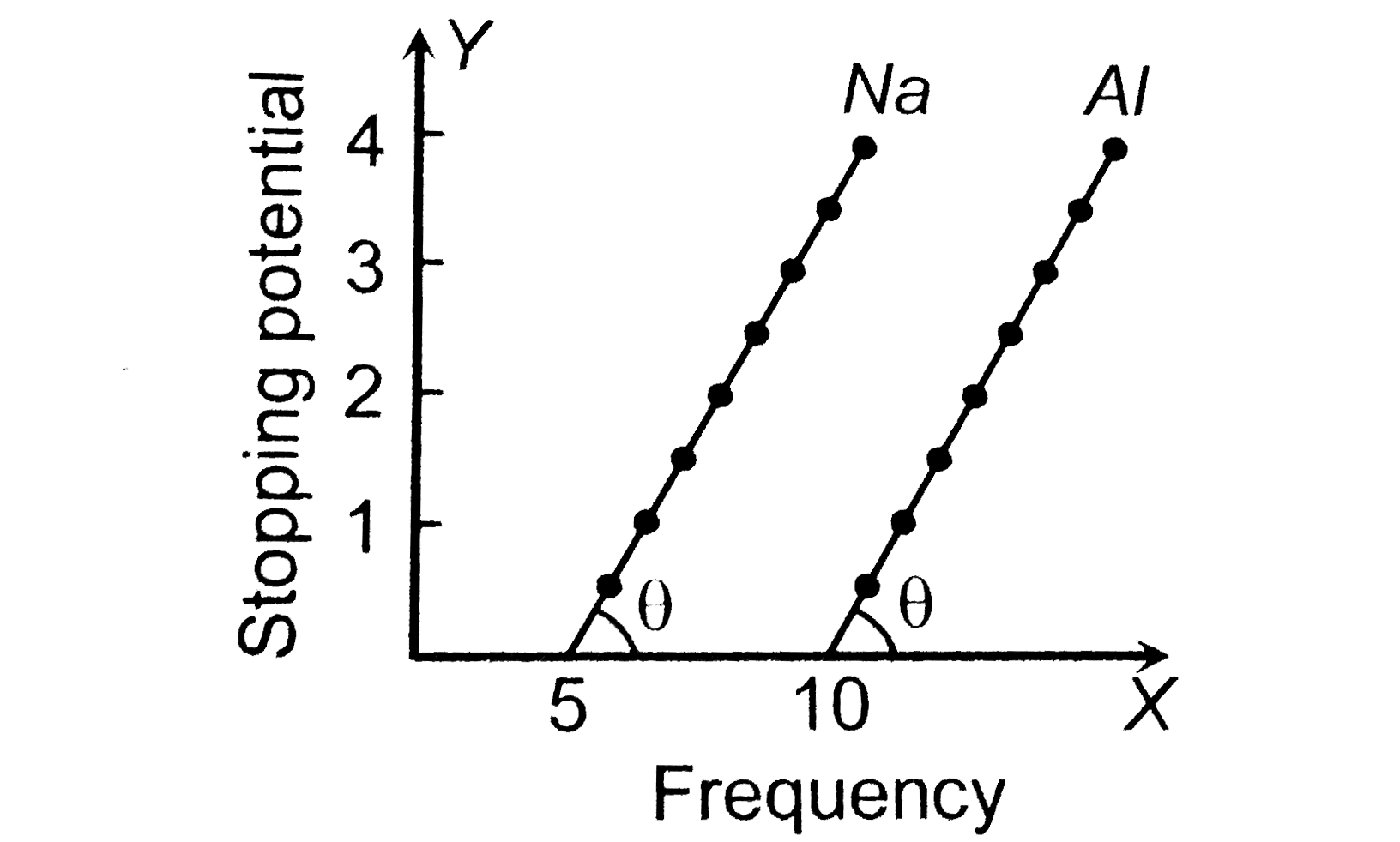From the figure describing photoelectric effect we may infer correctly that

A
and both have the same threshold frequency
B
Maximum kinetic energy for both the metals depend linearly on the frequency
C
The stopping potentials are different for and for the same change in frequency
D
ia a better photo sensitive material than
Video Solution
Text Solution
The correct Answer is:B
Stopping potential equals to maximum kinetic energy. Since stopping potential is varying linearly with the frequency. The for both the metals also vary linearly with frequency.
|
Topper's Solved these Questions
- DUAL NATURE OF RADIATION AND MATTERBOOK - A2ZCHAPTER - DUAL NATURE OF RADIATION AND MATTEREXERCISE - Assertion Reason
14 Videos
- CURRENT ELECTRICITYBOOK - A2ZCHAPTER - CURRENT ELECTRICITYEXERCISE - Section D - Chapter End Test
29 Videos
- ELECTRIC CHARGE, FIELD & FLUXBOOK - A2ZCHAPTER - ELECTRIC CHARGE, FIELD & FLUXEXERCISE - Section D - Chapter End Test
29 Videos
Similar Questions
Knowledge Check
In photoelectric effect
Alight energy is converted into the heat energyBlight is converted into electric energyClight energy is converted into the sound energyDelectric energy is converted into light energyIn photoelectric effect
Aphotons come out of a metal when it is hit by a beam of electronsBphotons come out of the nucleus of an atom under the action of an electric fieldCelectrons come out of a metal with a constant velocity which depends on the frequency and intensity of incident radiationDelectrons come out of a metal with different velocities nor greater than a certain value which depends only on the frequency of the incident light and not on its intensityIn photoelectric effect,
AIn photoelectric current is directly proportional to the intensity of incident light.BK.E.max of ejected electrons is dependent on intensity of radiations.Cthere is no time lag between the incidence of photons and ejection of electronsDAll of these are correct.
